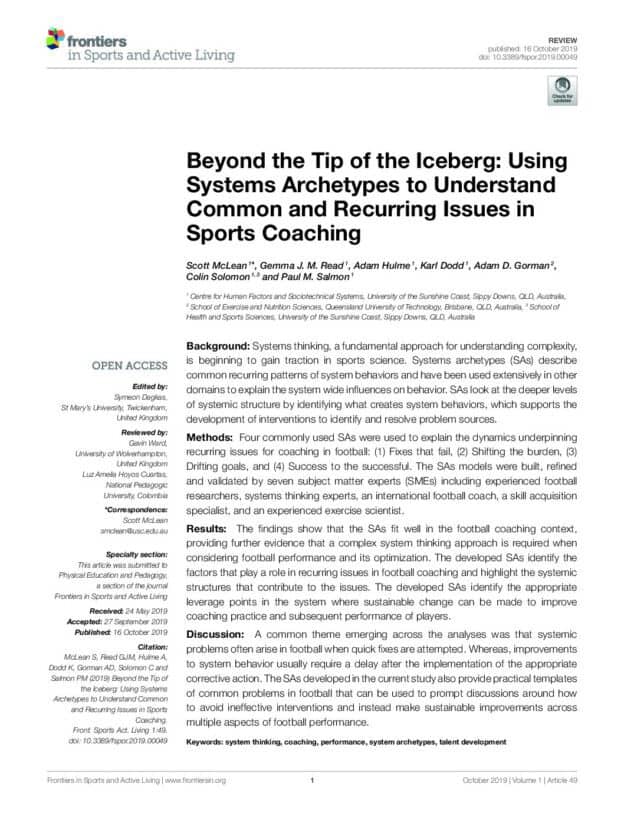Abstract
Background: Systems thinking, a fundamental approach for understanding complexity, is beginning to gain traction in sports science. Systems archetypes (SAs) describe common recurring patterns of system behaviours and have been used extensively in other domains to explain the system wide influences on behaviour. SAs look at the deeper levels of systemic structure by identifying what creates system behaviours, which supports the development of interventions to identify and resolve problem sources.
Methods: Four commonly used SAs were used to explain the dynamics underpinning recurring issues for coaching in football: (1) Fixes that fail, (2) Shifting the burden, (3) Drifting goals, and (4) Success to the successful. The SAs models were built, refined and validated by seven subject matter experts (SMEs) including experienced football researchers, systems thinking experts, an international football coach, a skill acquisition specialist, and an experienced exercise scientist.
Results: The findings show that the SAs fit well in the football coaching context, providing further evidence that a complex system thinking approach is required when considering football performance and its optimization. The developed SAs identify the factors that play a role in recurring issues in football coaching and highlight the systemic structures that contribute to the issues. The developed SAs identify the appropriate leverage points in the system where sustainable change can be made to improve coaching practice and subsequent performance of players.
Discussion: A common theme emerging across the analyses was that systemic problems often arise in football when quick fixes are attempted. Whereas, improvements to system behavior usually require a delay after the implementation of the appropriate corrective action. The SAs developed in the current study also provide practical templates of common problems in football that can be used to prompt discussions around how to avoid ineffective interventions and instead make sustainable improvements across multiple aspects of football performance.



Responses